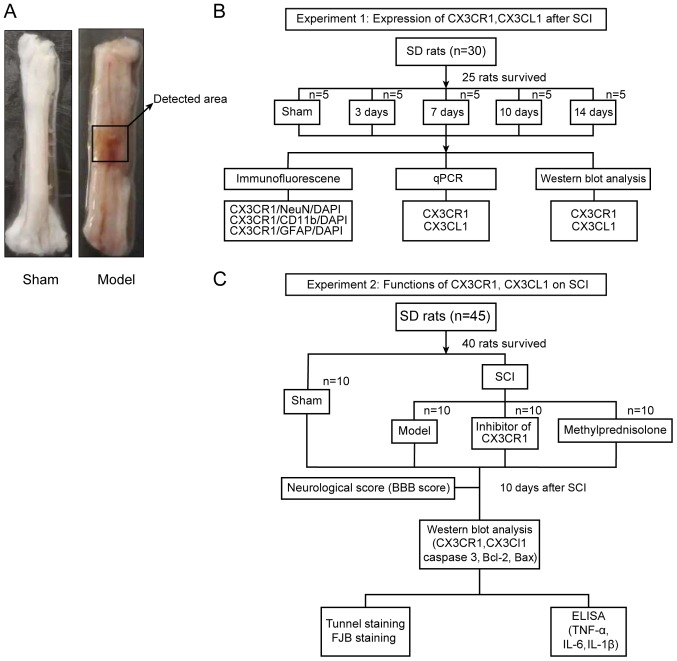Figure 1.
Study design. (A) The representative areas obtained from the injured rat spinal cords for further analysis. (B) Experiment subset I was employed for the time course expression analyses of CX3CL1/CX3CR1 after SCI. (C) Experiment subset II was employed to establish the functional role of CX3CL1/CX3CR1 signaling in SCI rats. SCI, spinal cord injury; CX3CL1, C-X3-C motif chemokine ligand 1CX3CR1, C-X3-C motif chemokine receptor 1; SD, Sprague-Dawley; q, quantitative; IL, interleukin; TNF, tumor necrosis factor; BBB, Basso Beattie Bresnahan; TUNEL, terminal deoxynucleotidyl transferase-mediated dUTP nick-end labeling; FJB, fluoro jade B; DAPI, 4′,6-diamidino-2-phenylindole.

